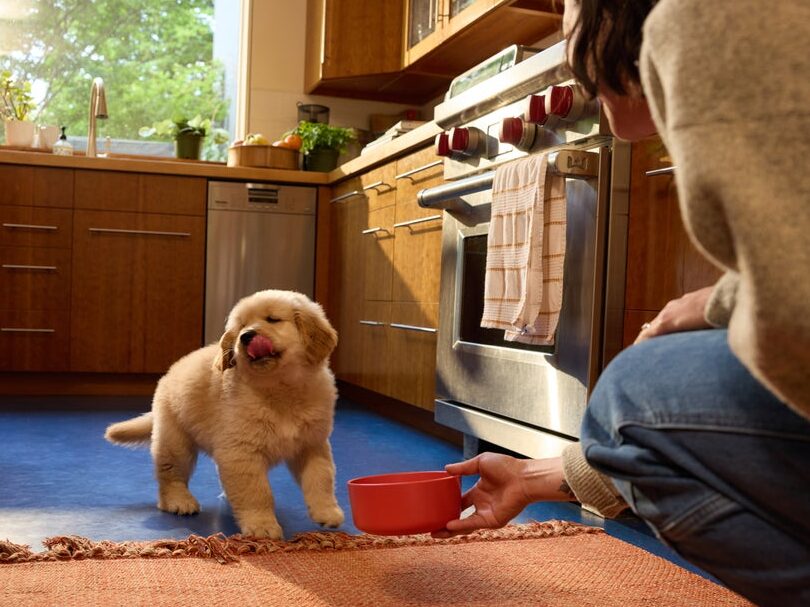Hey Ollie blog readers! We’re offering you an exclusive 60% OFF your starter box! Try now!
Animal assisted therapies have become more and more popular in recent years. From therapeutic horseback riding to dogs visiting children’s hospitals many experts tout the healing power of animals. If you are a new (or experienced ) pet owner, you may be curious about how to get your dog certified as a therapy dog or confused about what therapy dogs can and can’t do. We put together this comprehensive guide so you will be ready to rock your certification exams!
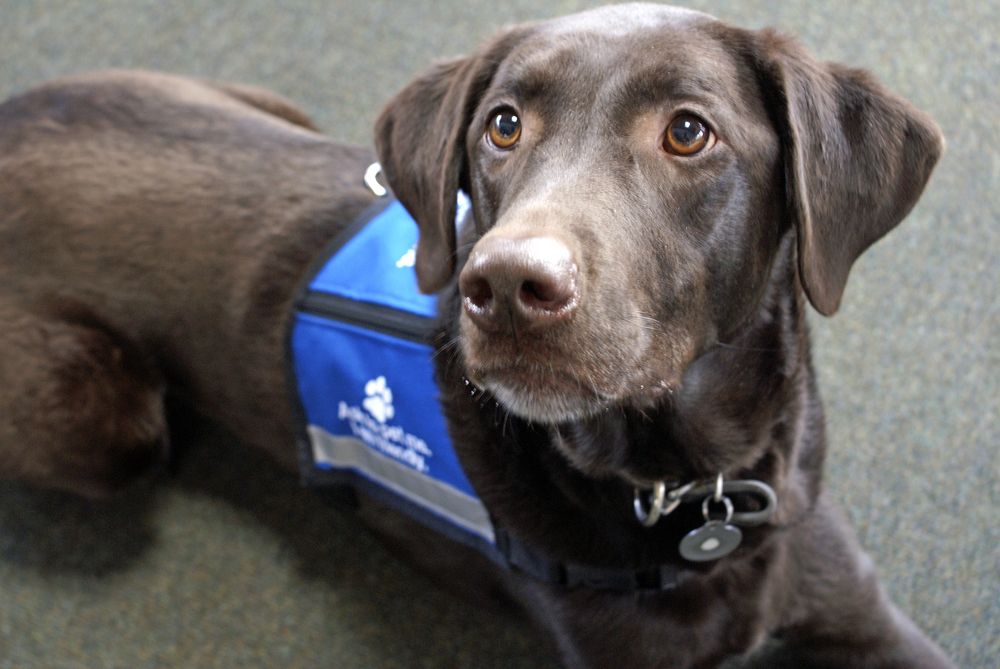
What is a therapy dog?
First thing’s first, a therapy dog is a pet that does volunteer work with their handler in settings like schools, nursing homes, hospitals and even office buildings. These dogs have some training and certification but it is not the same as an emotional support dog or service dogs. They provide comfort, support, and stress relief. They, like a pet dog are only allowed to go places they are invited into.
Like therapy dogs, emotional support dogs are also pets. These dogs provide emotional support for their handlers who have been diagnosed with a mental health condition. This different from a therapy dog who works with their handler to provide emotional support for folks they are visiting.
Service dogs, sometimes called guide dogs when they work with blind handlers, have the most training and are protected under the ADA. These dogs are actually considered medical equipment and are allowed anywhere their handler goes (with a very few exceptions). Service dogs do not have to be in a harness or leash. If a service dog’s leash gets in the way of the task they are trained to do, you may see these dogs working off leash. The dog still must remain under the handler’s control at all times. Another important thing to know about service dogs is that if you see an unaccompanied service dog you should follow the dog, they are likely looking for help for their handler.
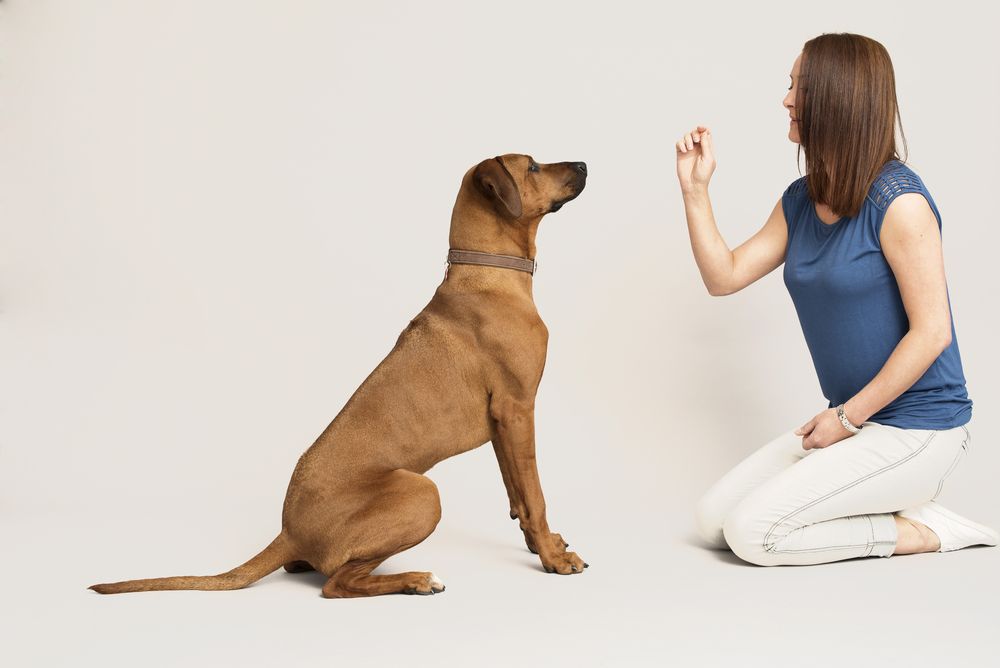
What are the requirements for becoming a certified therapy dog
Getting your dog certified is relatively simple. The first step is that your dog has to be at least one year old. Then, they have to get certified as a Canine Good Citizen (CGC) through the American Kennel Club (AKC). The CGC exam is 10 points long. You as the owner will take the responsible owners pledge. The evaluator will then take you through the rest of the 10 points. These include:
- Accepting a friendly stranger
- Sitting politely for pets
- Appearance and grooming
- Loose leash walking
- Walking through a crowd
- Siting down and staying in place
- Coming when called
- Reaction to another dog
- Reaction to a distraction
- Supervised separation
For this point the evaluator will greet you and shake your hand, not paying attention to the dog. Your dog should not show shyness or aggression and you don’t want your dog to jump all over the evaluator!
You will ask your dog to sit and the evaluator will give your dog a few pets. This demonstrates that your dog will allow a friendly stranger to pet them when you are out and about.
The evaluator will examine your dog for cleanliness and enure that they are well cared for. He or she will also brush or groom your dog a little. This shows that your dog will tolerate being handled or examined by a groomer or the vet. The dog does not have to sit or stand in any specific position and you are allowed to talk to or praise your dog in this situation.
The evaluator will ask you and your dog to walk in a specific pattern. This is to show you are in control of your dog. Your dog can be on either side of you and does not have to be in a perfect heel position. If you stop your dog should also stop walking. You should be prepared to turn right and left and stop. Your dog can sit when you stop but that is not a requirement for the exam.
This is to show your dog will remain under your control when you’re out in public. For the purpose of the test a crowd may be 2-3 people walking around when you walk your dog. Your dog can look at the people but should not pull you or show signs of shyness or resentment. The people may come fairly close to you and your dog.
You will demonstrate your dog’s basic obedience by performing sit, down, and stay commands. For stay, the dog will be placed on a 20 foot leash and the handler will walk to the middle of lead while the dog remains in place.
At this point in the exam you should be 10 feet from your dog who is in a sit or down stay. You will recall the dog to you.
For this test, you and another handler on the other side of the room will walk towards each other and meet in the middle. You will shake hands, exchange pleasantries and continue walking. This shows that your dog is able to stay calm around other dogs.
The evaluator will make a distracting noise. This could be from dropping something like a crutch or cane, rolling a cart or suitcase past your dog or even someone jogging past them. Your dog may be curious or even startled by something dropping but they can’t panic, bark or show an aggressive tendency.
The final test point is the supervised separation. For this test the evaluator will say something like “Can I watch your dog?” and you will hand the leash over and leave the room for 3 minutes. The dog does not have to stay in a certain position (sit or down) but should not pace, bark or whine. Your dog might be a little nervous and that is okay! The handler can speak to your dog but not excessively and can’t pet them or try to manage their behavior.
The second step will be a certification exam through a certifying organization. There are many organizations to choose from depending where you live. These include Therapy Dog International, Bright and Beautiful, Alliance of Therapy Dogs, Love on a Leash or Pet Partners. The AKC keeps a good list of certifying organizations on their website.
Each of these organizations has different requirements for certification. Not only will there be requirements for your dog like being up to date with their license and vaccinations and passing the CGC and evaluation, but also for you as the handler. These may include things like being at least 18 years of age, completing a criminal background check and child abuse clearance. These may be required even if you and your dog don’t plan to work with children.
The certification also generally provides insurance for you for your visits. Check with the organization to understand what the insurance covers before you start going on your visits.
In most cases your therapy dog certification pertains to you and your dog as a team. This means that when you are on a visit you are not able to have anyone else handle your dog. Yes, even if you go to the bathroom. If you allow others to handle your dog and there is an incident you may not be covered by your insurance. Read all of the rules and information before you begin visiting with your pup — better to be safe than sorry.
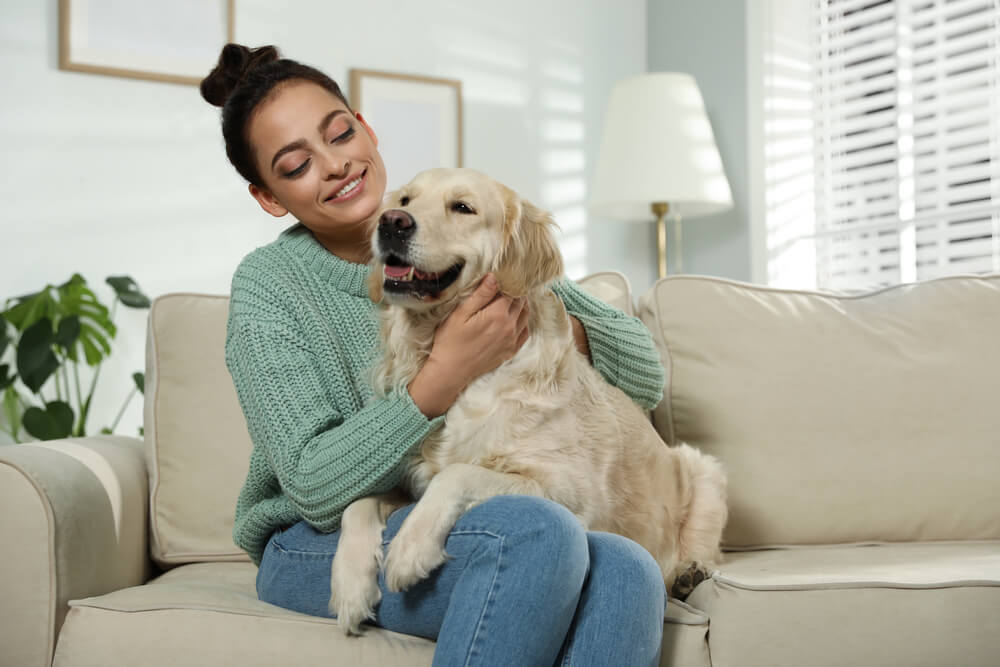
What breeds make the best therapy dogs?
When working with therapy dogs you will see many different breeds from Golden Retrievers and Cavalier King Charles to Chihuahuas, Pit Bulls, Great Danes and mixed breeds that came from shelters and rescues.
While the breed of dog is probably not important there are a few things you want to look for. First, does your dog enjoy being around people? The role of a therapy dog is very people oriented. If your dog doesn’t enjoy meeting new people or they are shy, becoming a therapy dog might not be for them — and that is okay.
Second, is your dog nervous about new places and new situations? Therapy dogs often do work in places that are not necessarily designed for dogs. They may have to walk on funny surfaces or past all kinds of objects like hospital beds, IV poles and medical equipment or desks in classrooms. While your dog may need some time to get used to all of these things,if they hate it, therapy work may be a challenge.
Finally, can your dog stay calm in highly distracting situations? Therapy dog visits often involve working in crowds, around food and other dogs.
To sum it up, most therapy dog tests evaluate two things – obedience and temperament. Obedience primarily refers to how well you control your dog. Do they listen the first time? If you say leave it or drop it, are they able to do it?
Temperament refers to their personality. How well do they handle greetings from multiple and different people. Are they calm and steady around distractions and other dogs?
I need help training my dog, is there a therapy dog school?
While there isn’t exactly a therapy dog school, many dog trainers do offer therapy dog prep classes. These classes are a great way to help you and your dog prepare for both the CGC and your therapy dog evaluation. They usually meet for an hour per week for 6-8 weeks and then you’ll take your tests. Costs range from about $150 – $300 depending on the length of the session and where you live. You will also pay a small fee $30-50 for testing.
In between classes you and your dog will want to practice as much as you can so you feel confident on test day. You can also work with your teacher if there is something your pup is struggling with, like medical equipment or not jumping during greetings.
While you can totally train your dog at home and still pass both the CGC and therapy dog evaluation, attending a group class means you get the real time feedback of an instructor and the challenge of working around other dogs.
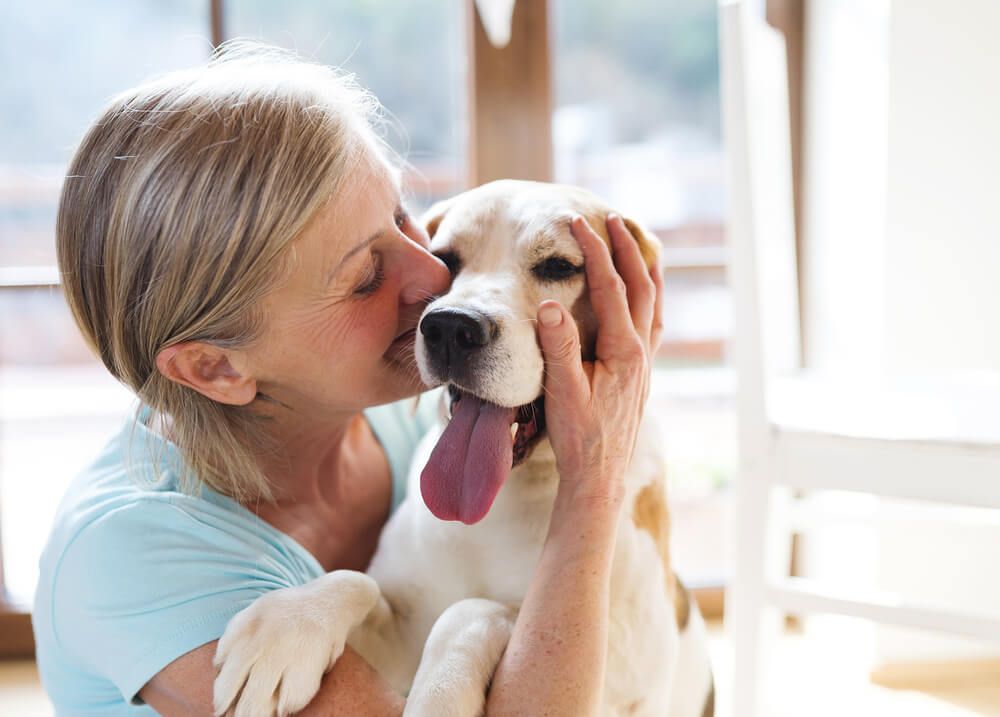
Okay, I am certified, where can my therapy dog and I visit?
There are many places that welcome therapy dogs! Some certifying organizations may also help with placement or post requests from organizations that would like to have dog visitors. If you are looking to visit in hospitals, nursing homes or rehabilitation centers, check their website to learn how to get involved. Like other volunteer positions, check for a volunteer section on the website first.
It is important to know that while we have addressed the requirements for becoming a therapy dog team, individual facilities may have additional requirements. For example many hospitals and medical facilities require that you and your dog get flu (or other) vaccines to be able to visit.
Some facilities may even ask you to have your dog medically cleared before volunteering or state that dogs who eat raw foods may not enter the facility.
When planning your visits, make sure you have completed all of the required clearances and paperwork first. You may also be required to attend a volunteer orientation without your dog.
Ask any questions you may have about what you need to bring or wear. Some facilities require that as a handler you wear closed toed shoes and have your ID visible at all times. Your dog may be required or prohibited from wearing a vest – make sure you know the rules. You may also need to use either a 4-foot or 6-foot leash depending on the facility.
Medical facilities and schools will most likely have the strictest requirements. Therapy dogs also work in libraries, colleges and universities, office buildings and even the court system in some cities and states.
No matter your interest, there is the perfect job for both you and your dog. It may take you a few tries to find the perfect fit and that is normal!
Having a successful first therapy dog visit
Your first therapy dog visit may be exciting or make you a little nervous.In order to have a great first visit, here are a few things to keep in mind:
1. Set your dog up for success
This begins with choosing the right facility. If your goal is a children’s hospital maybe start with a library or elementary school. If your dog isn’t a big fan of children or hasn’t spent much time with them, consider a first visit at a University. As your dog gains more experience, you can try different opportunities.
2. Keep the visit short
Just like training, your dog’s attention span may not be that long and this type of work can be mentally and physically demanding. For new therapy dog’s many programs will ask you to limit your visits to an hour or less.
3. Be your dog’s advocate
Your dog can’t talk, so if you notice someone petting your dog in a way they don’t like or if your dog needs a break/drink/change of scenery or even to leave, it is your job to keep your dog happy, comfortable and safe. You and your dog are volunteers. It is okay to tell someone “My dog doesn’t like his head touched, would you like to pet his shoulder?” or ‘We would love to visit with you, but my dog needs a break. We can come back in a few minutes.” Or even if you have to “This situation doesn’t feel safe for my dog, I am sorry but we will need to leave.”
4. Watch for your dog’s tells
Your dog will likely have some subtle or even not so subtle signals to tell you that they are getting tired or ready to go. This could look like lying down, looking for the door, getting barky or mouthy or starting to shut down. It may take you a few visits to learn these tells and that’s normal. The goal is to learn the signals leading up to this and be able to end the visit on a good note with your dog wanting more. No matter what you’ve committed to, if your dog doesn’t want to work, that is okay. Most facilities who are experienced with having therapy dogs in won’t even bat an eyelash when this happens. It happens to all handlers. Just like you may have an off day or need a mental health day from work, your dog does too.
5. Reward your dog for a job well done
After your visit offer lots of praise and maybe a special treat. This should be something really, really special. It could be a trip through a drive through or maybe even a steak dinner or piece of plain salmon. The point is, you want to make your dog feel special and celebrate they great job they’ve done. You can also give yourself a big pat on the back for bringing joy to the people that you are sharing your dog with!
The Ollie blog is devoted to helping pet parents lead healthier lives with their pups. If you want to learn more about our fresh, human-grade food, check out MyOllie.com.
Tagged As:

The nutrition your dog needs,
the food they want.

Enjoying our articles? Subscribe our Newsletters and get new articles directly to your inbox
You might also like
13 May 2025
8 MINS READ
Puppy Training Guide & Behavior Timeline
Bringing home a puppy is pure magic. It’s also pure chaos—tiny teeth, zoomies, accidents in the house, and moments that make you wonder if you’re raising a future genius or a tiny tornado. …
by Ollie Pets
10 May 2025
12 MINS READ
New Puppy Checklist: Guide To Prepare For A New Dog
Bringing home a new puppy? This checklist covers everything new dog owners need—from essential supplies to training, feeding, and first vet visits.
by Ollie Pets
3 April 2025
9 MINS READ
Home Remedies for Fleas on Dogs: 10 Natural Ways That Actually Work
Wondering what kills fleas on dogs instantly and naturally? If your pup is scratching like crazy, it may be time to take action. In this guide, we’ll show you the most effective home remedies for…





